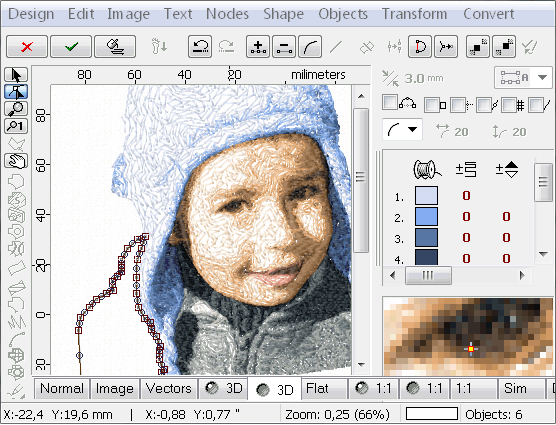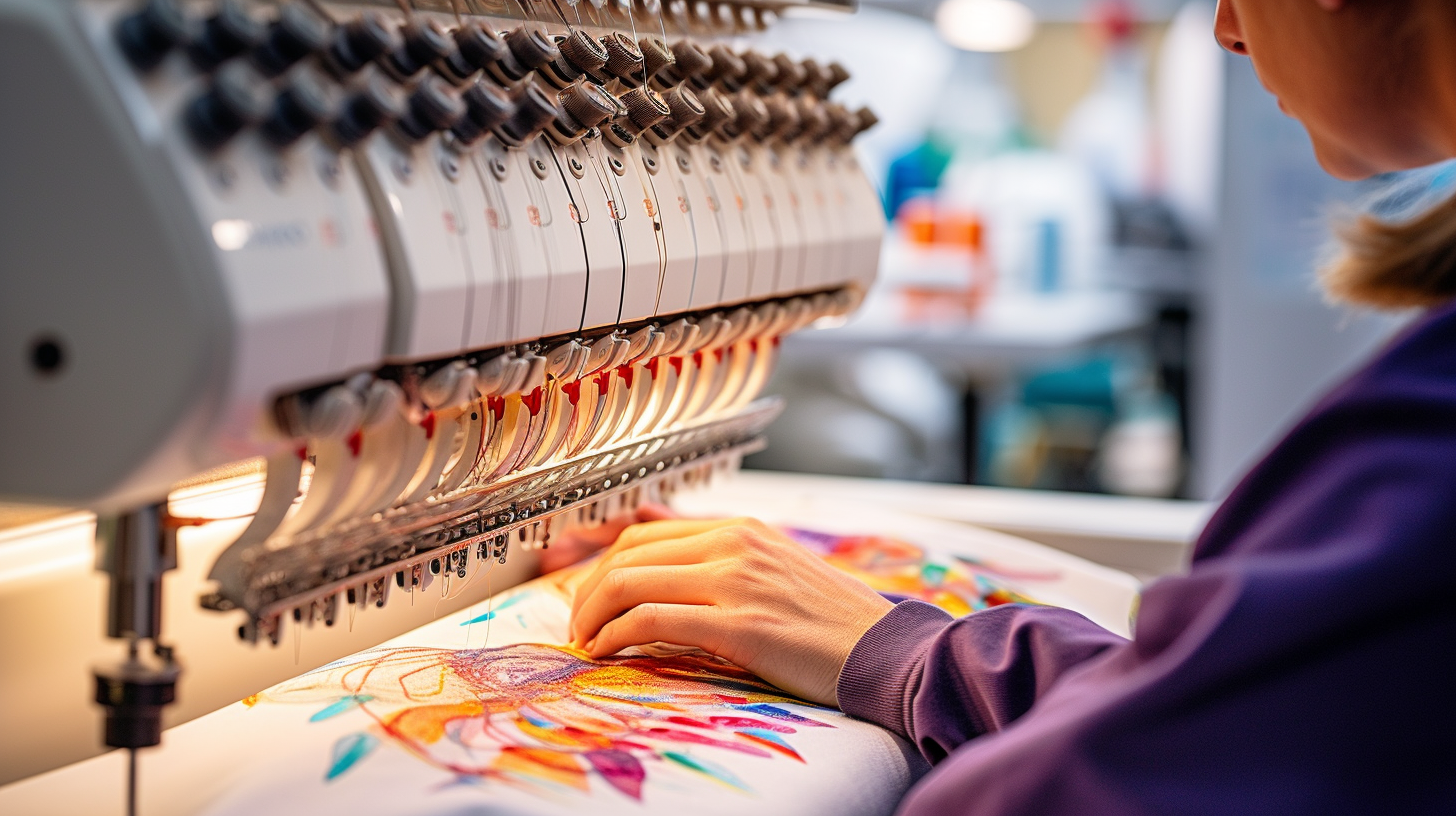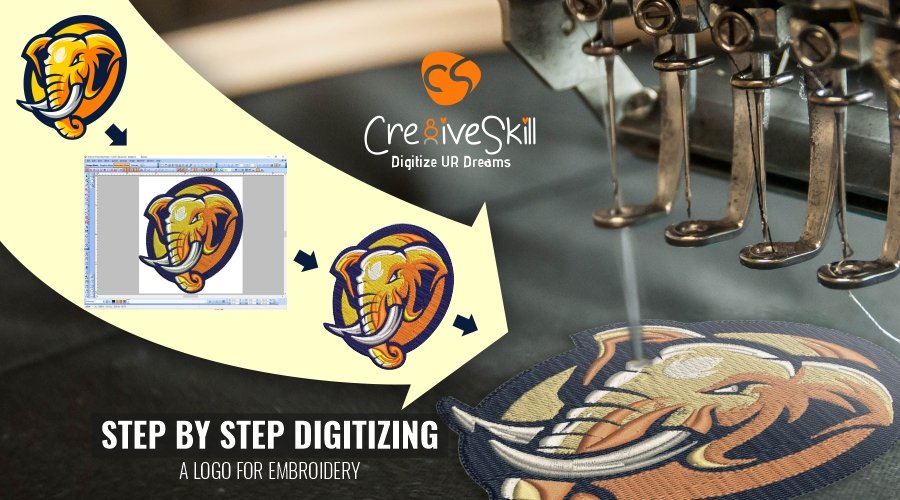Understanding the Needlework Digitizing Refine: Your Ultimate Overview
Embroidery digitizing is a careful craft that requires precision and expertise to equate intricate styles into digital layouts for machine embroidery. As artisans start this journey to grasp the needlework digitizing procedure, a comprehensive understanding of the basics establishes the structure for quality. Nevertheless, beyond the simple expertise exists a world of advanced software, specialized devices, and nuanced methods waiting to be checked out. By diving into the nuances of digitizing, one can unlock a globe of innovative possibilities and elevate their embroidery projects to brand-new elevations.

Understanding Embroidery Digitizing Essentials
Embroidery digitizing essentials create the foundation upon which complex styles are converted into machine-readable formats for accurate sewing. This first action in the needlework digitizing process is vital for ensuring that the final embroidered product is a devoted representation of the initial layout. Comprehending embroidery digitizing basics entails comprehending crucial ideas such as stitch kinds, stitch instructions, density, rug, and draw compensation.
Sew kinds play a crucial role in establishing the aesthetic and textural end result of the stitched design. By selecting the proper stitch kind, whether it be satin, fill, or running stitch, digitizers can accomplish the wanted impact and enhance the total high quality of the embroidery. In addition, sew instructions affects the circulation and dimension of the layout, while density figures out the spacing and insurance coverage of the stitches.
Furthermore, padding sewing offers stability to the layout by securing the textile and stopping distortion throughout the embroidery process. Pull settlement is one more necessary consideration to neutralize the natural propensity of fabric to contract when sewn. Grasping these needlework digitizing fundamentals is basic for developing professional-quality stitched items.
Picking the Right Digitizing Software Application
Picking the suitable digitizing software application is an important decision that substantially impacts the efficiency and top quality of the embroidery digitizing process. Digitizing for Embroidery. When choosing the best digitizing software application, it is important to take into consideration aspects such as the intricacy of styles you intend to develop, the user-friendliness of the software, the degree of customer support supplied, and the compatibility with your needlework equipment
There are various digitizing software program options offered out there, varying from fundamental programs for novices to sophisticated software program for specialist digitizers. Some preferred selections consist of Wilcom EmbroideryStudio, Hatch Needlework Software Program, and PulseID. These software supply a vast array of devices and features to assist you produce complex layouts easily.
Before making a decision, it is a good idea to explore the different software alternatives through totally free tests or trials to figure out which one ideal fits your needs. Furthermore, reviewing evaluations and seeking referrals from seasoned digitizers can offer beneficial insights right into the toughness and weaknesses of each software (Digitizing for Embroidery). By meticulously evaluating your demands and comparing the features of various digitizing software application, you can make an educated selection that improves your needlework digitizing operations
Digitizing Tools and Strategies

Optimizing Layout Setup for Embroidery
Mastering the details of style settings is fundamental in achieving ideal cause the needlework digitizing process, structure upon the structure laid by understanding digitizing tools and strategies. When enhancing layout setups for embroidery, it is important to think about factors such as stitch kind, thickness, rug, draw payment, and registration. Sew kind selection influences the overall look of the style, with options like satin, fill, and running stitches providing various structures and impacts. Thickness refers to the spacing and thickness of stitches, impacting the design's coverage and durability. Proper padding stitching gives security and protects against fabric distortion, particularly for complex layouts or on stretchy products. Draw payment adjusts for textile stretch during stitching, making certain accurate layout duplication. Enrollment settings align various aspects of the layout properly, preserving general layout stability. By fine-tuning these style setups, embroiderers can improve the high quality and accuracy of their stitched developments.

Troubleshooting Common Digitizing Issues
When running into common digitizing issues throughout the needlework procedure, it is important to comprehend the origin and implement efficient options immediately. One usual trouble is stitch density concerns, where stitches may be as well thick, triggering the textile to tighten, or too sporadic, leading to voids in the style. Adjusting the stitch thickness setups in the digitizing software program can help fix this concern.
Another regular difficulty is thread breaks during the embroidery procedure. This can take place as a result of numerous reasons such as incorrect tension setups, view publisher site dull needles, or making use of low-grade string. Making sure proper upkeep of the embroidery equipment, including regular needle modifications and stress adjustments, can decrease the incident of thread breaks.
Furthermore, design registration errors can cause misaligned aspects within the needlework design. Inspecting the style navigate to this website positioning in the digitizing software and making essential changes prior to sewing can aid in preventing this concern. By attending to these typical digitizing concerns immediately and efficiently, you can ensure a smoother embroidery procedure and high-grade ended up items.
Conclusion
Finally, understanding the embroidery digitizing process calls for a solid understanding of the basics, the appropriate choice of software application, and expertise of tools and techniques. Optimizing layout setups and repairing usual digitizing issues are important steps in guaranteeing top notch needlework outcomes. By complying with these steps diligently, one can attain precision and This Site performance in the digitizing procedure.